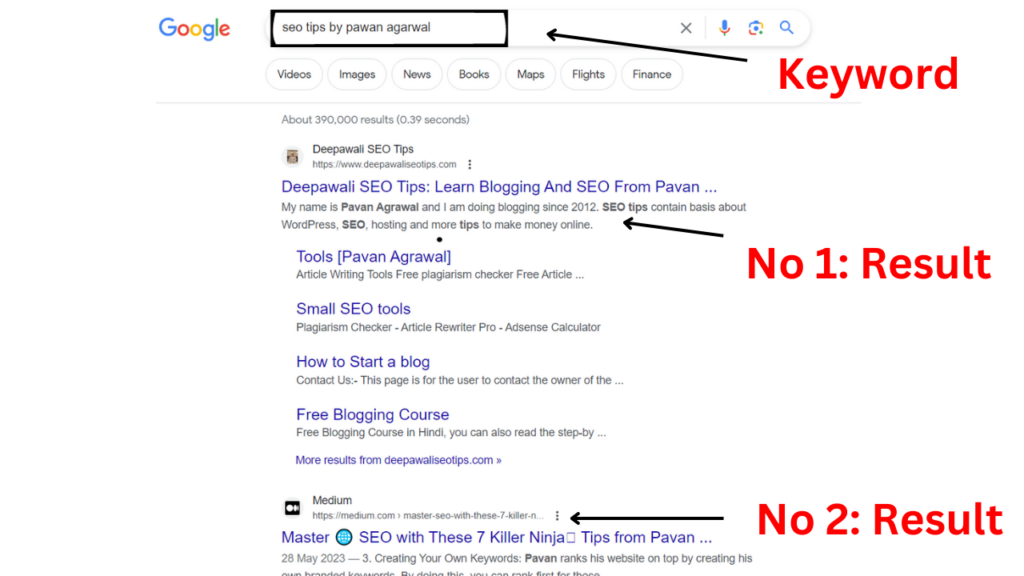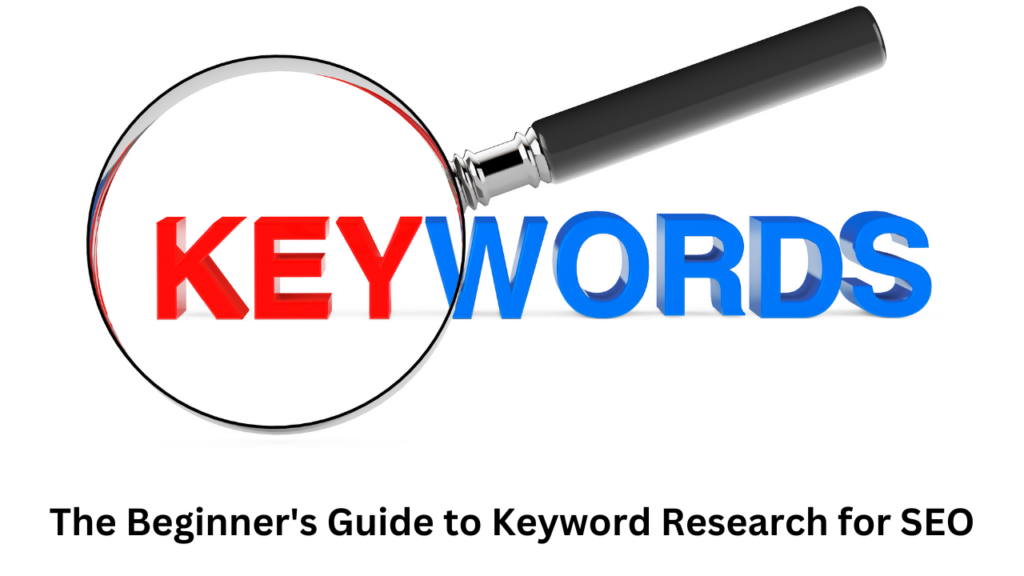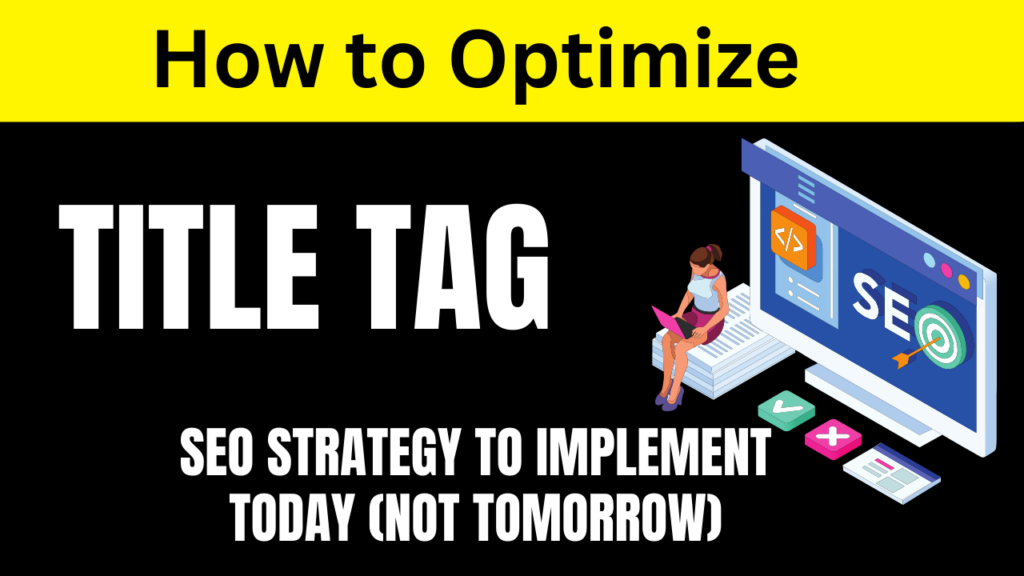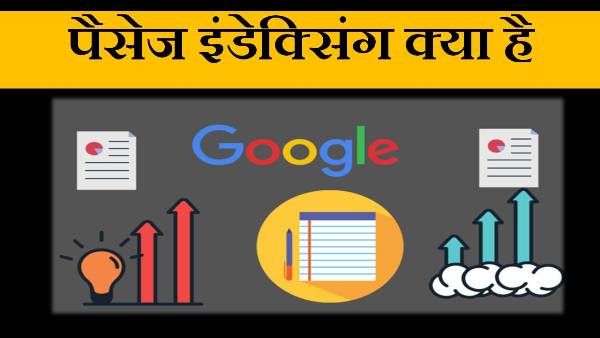Do you want to become a successful blogger? Do you want to rank your website on Google? If yes, it is very important for you to know what SEO is and why it is essential. This will help you do SEO for your blog correctly.
Do you know that there are nearly 4 million blog posts on Google every day? Only about 10% of these blog posts actually rank on Google. And among those, only 1% make it to the first page of Google. So, my friends, the competition is extremely high but not impossible.

If you combine hard work with smart work, it will become much easier for you. How?
Today, in this article, I will provide you with very important SEO-related information that you may not have read anywhere else. I am sharing this information based on my own experience. Topics will include what SEO is, how to do SEO correctly, on-page, off-page, technical SEO, keyword research, and more. So, it is crucial that you read and understand the entire article carefully.
Let’s first understand what SEO is.
What Is SEO
SEO (Search Engine Optimization) is a combination of over 200 ranking factors used by Google to determine the order in which articles are displayed, deciding which articles appear at the top and which ones appear later.
Full form of SEO
Full form of SEO is "Search Engine Optimization"Can you rank only on Google through SEO?
No, that’s entirely wrong. If you optimize your articles for SEO correctly, you can rank not only on Google but also on 15 other search engines apart from Google, such as Yahoo, Bing, Yandex, and more. While you may get less traffic from these search engines, you will still receive traffic.
Do you still not understand what SEO is? Let me try to explain with an example.
Imagine you performed a keyword search on Google for “SEO tips by Pawan Agarwal”. Now, Google recommends some search results to you.

The result ranking 1st has optimized its content very well for SEO. So, when someone searches for “SEO tips by Pavan Agrawal”, Google considers this content the best and displays it.
I believe you now have a better understanding of SEO. If you haven’t fully grasped it yet, as you continue reading, you’ll definitely understand.
Why is SEO Important for Blogging and Make money Online
If you take an exam without preparation, can you ever pass it? No, and that’s why SEO is crucial to rank any website.
When anyone searches on Google, Google uses more than 200 ranking factors to determine which blog posts should be shown first and which ones later.
Google mostly ranks blog posts based on how well they provide relevant information to a search query. It’s not just about writing on a subject; it should be written in a way that Google can understand.
Learning SEO is not as difficult as breaking a mountain. You need to pay attention to some important things while writing content, which I will share with you later. Once you’ve learned SEO properly, you can not only rank your blog but also help others rank their blogs.
It’s essential to understand the importance of SEO (Search Engine Optimization) a little deeper.
The majority of people search on Google to find answers to their questions. So, if your blog ranks at the top of those search results, your chances of getting clicks increase by 31.7%.
Organic search results depend entirely on SEO. All search engines select results through SEO to determine which result to show the user, making them more satisfied.
Always, when your blog ranks No. 1 in search results, users start perceiving it as a trusted brand. If you rank at No. 2 for a keyword, the user is likely to click on your result.
If your website ranks No. 1 on Google and your content is strong, users will share it on social media platforms like Facebook, Twitter, and Instagram, which helps increase your following.
It’s clear that if your blog ranks at the top on Google, your website traffic will increase significantly.
If you are selling any product on your website and have written an excellent SEO-optimized blog post for it, the chances of readers buying that product increase significantly.
You might think that SEO is essential only for Google.
But this is wrong. While you will rank at the top on Google, if your content is not high-quality, Google will slowly decrease your blog post’s ranking. Google does this based on data received from readers. This is why, along with SEO, you should focus on the quality of your content.
You may be wondering if Google is the only search engine where SEO is essential.
No, you can rank on more than 15 other search engines, including Yahoo, Bing, and Yandex, if you optimize your content correctly for SEO. While you may receive less traffic on these search engines, it’s still beneficial.
Now you have a slightly deeper understanding of the importance of SEO.
3 Types Of SEO
Did you also think until now that there are only two types of SEO, on-page and off-page?
This information is both incorrect and correct. How?
Around 7 to 8 years ago, there were only two types of SEO. However, as Google continued to upgrade itself, new types of SEO emerged. Currently, there are three types of SEO:
However, there are still some people who are only aware of two types of SEO. Although they might be familiar with technical SEO, they do not consider it as a separate type of SEO.
I believe that while on-page and off-page SEO are extremely important, without technical SEO, you cannot rank as the No. 1 result on Google. That’s why technical SEO is also crucial.
So let’s first understand what On-Page SEO is and how to do it.
What is On-Page SEO?
On-page SEO (Search Engine Optimization) refers to the practice of optimizing web pages to improve a website’s search engine rankings and earn organic traffic. Unlike off-page SEO, which involves external signals like backlinks, on-page SEO focuses on enhancing aspects of your website that you have direct control over. This includes content elements, site architecture, and HTML elements.
Here are key factors to consider for on-page SEO:
- Content Quality: High-quality, informative, and original content that fulfills the search intent is crucial. Google’s algorithms prioritize content that is valuable and relevant to the user’s query.
- Title Tags: These are HTML elements that specify the title of a web page and are displayed on search engine results pages (SERPs) as the clickable headline. They should be concise, include primary keywords, and accurately describe the page content.
- Meta Descriptions: Although not a ranking factor, meta descriptions can influence click-through rates. They provide a brief summary of the page content in SERPs.
- Headings and Subheadings (H1, H2, H3, etc.): Proper use of header tags helps organize content for readers and search engines. The H1 tag is typically reserved for the main page title, with subsequent headers (H2, H3) organizing subsections.
- URL Structure: Descriptive and clean URL structures are more user-friendly and easier for search engines to crawl. Include keywords and use hyphens to separate words.
- Keyword Optimization: Keywords should be well-researched, relevant to the content, and included naturally in the text. Avoid keyword stuffing, and consider long-tail keywords for more specific search queries.
- Content Freshness: Regularly updated content is seen as one of the best indicators of a site’s relevancy. Ensure updates are meaningful and provide additional value.
- Internal Linking: Linking to other pages on your site helps search engines crawl the site, establishes a hierarchy, and enhances the user experience by providing further reading options.
- Image Optimization: Images should be compressed for faster page load times. Use descriptive filenames and alt attributes that accurately describe the image content and include relevant keywords.
- Mobile Responsiveness: With mobile-first indexing, Google predominantly uses the mobile version of the content for indexing and ranking. Ensure your site is optimized for mobile devices.
- Page Load Speed: Faster pages are more efficient for indexing and provide a better user experience. Google has indicated that page speed is a ranking factor for mobile searches.
- Use of Schema Markup: Structured data markup helps search engines understand the content and context of your site, which can enhance visibility in SERPs through “rich snippets”.
- Content Structure and Readability: Organize content in an easily digestible format. Use short paragraphs, bullet points, and highlight important information.
- Social Sharing Buttons: While social signals are not a direct ranking factor, content that is shared often is likely to accumulate backlinks which do affect rankings.
- SSL/HTTPS: Secure sites (HTTPS vs. HTTP) are a must-have as Google considers security as a ranking signal.
- User Engagement Metrics: User behavior signals such as time on site, pages per session, and bounce rate may indirectly affect SEO as they can indicate the quality and relevance of the content.
In Conclusion: For effective on-page SEO, you need a holistic strategy that encompasses technical elements, content quality, and the user experience. The goal is to make both users and search engines understand the purpose of your content, find it valuable, and deem it worthy of ranking well in SERPs.
These elements collectively make your On-Page SEO complete and help your content rank higher in search engine results.
What is Off Page SEO?
Off-Page SEO refers to the activities and strategies performed outside your website to improve its search engine rankings and visibility. Unlike On-Page SEO, which focuses on optimizing your site’s content and structure, Off-Page SEO is all about building your website’s credibility and authority on the web.
Key factors in Off-Page SEO include:
- Backlinks: Backlinks, or inbound links from other websites to yours, are one of the most critical off-page SEO factors. High-quality and relevant backlinks can significantly boost your website’s authority.
- Link Building: The practice of acquiring backlinks from reputable and relevant websites through various techniques, such as guest posting, broken link building, and influencer outreach.
- Social Signals: The activity and engagement on social media platforms can indirectly impact your SEO rankings. Shares, likes, and comments on social media can help increase your content’s visibility.
- Content Marketing: Creating and promoting high-quality, shareable content that encourages other websites to link to your site.
- Online Reputation Management: Monitoring and managing your online brand reputation, including responding to reviews, managing mentions, and addressing negative feedback.
- Local SEO: For businesses with a physical presence, optimizing for local search, including Google My Business listing and local citations.
- Brand Mentions: Being mentioned or cited online, even without a direct link, can improve your website’s authority.
- Forum and Community Participation: Engaging in online forums and communities related to your niche and providing valuable insights can drive traffic and build authority.
- Social Bookmarking: Submitting and sharing your content on social bookmarking sites can increase visibility and backlinks.
- Guest Blogging: Writing high-quality guest posts on authoritative websites within your niche, including a link back to your site.
- Influencer Outreach: Collaborating with influencers to promote your content and acquire backlinks or social mentions.
- Press Releases: Publishing newsworthy content or press releases that can be picked up by news websites and blogs.
Off-Page SEO plays a crucial role in demonstrating your website’s authority and trustworthiness to search engines, which, in turn, can lead to higher search rankings and increased organic traffic. Building a strong off-page SEO strategy often requires time and effort, but it can yield significant benefits for your online presence.
What is Technical SEO
Technical SEO, also known as on-page SEO, is a branch of search engine optimization (SEO) that focuses on optimizing the technical aspects of a website to improve its search engine rankings. It involves making changes to the website’s structure and coding to make it more search engine-friendly and improve its performance in search engine results pages (SERPs). Technical SEO is crucial because search engines like Google use various algorithms to crawl, index, and rank web pages, and a well-optimized website can help search engines understand your content and serve it to relevant users.
Here are some key factors and considerations for technical SEO:
- Site Speed: Page load speed is a critical factor in SEO. A slow website can negatively impact user experience and search engine rankings. Optimize your site’s speed by compressing images, using browser caching, and minimizing HTTP requests.
- Mobile Optimization: With the increasing use of mobile devices, Google prioritizes mobile-friendly websites. Ensure your site is responsive and provides a good user experience on mobile devices.
- HTTPS (SSL Certificate): Having an SSL certificate installed on your website (resulting in an “https://” URL) is not only a ranking factor but also important for security. It’s considered a best practice to secure your site with HTTPS.
- XML Sitemaps: Create and submit XML sitemaps to search engines. These sitemaps help search engines discover and index your content more effectively.
- Robots.txt: Use a robots.txt file to control which parts of your site should or should not be crawled by search engine bots. This is essential for managing how search engines access your content.
- Canonicalization: Implement canonical tags to prevent duplicate content issues and specify the preferred version of a URL if you have similar content on different URLs.
- URL Structure: Ensure your URLs are clean, descriptive, and contain relevant keywords. Avoid using dynamic URLs with query parameters.
- Schema Markup: Implement structured data using schema markup to provide search engines with additional context about your content. This can lead to rich snippets in search results.
- Mobile-Friendly Design: Use responsive web design to ensure your site looks and functions well on all device types and screen sizes.
- Indexability and Crawlability: Make sure that search engine bots can crawl and index your site’s pages by avoiding noindex tags, nofollow links, and other blocking mechanisms.
- 404 Errors and Broken Links: Regularly check for and fix broken links and 404 errors on your site. They can negatively impact user experience and SEO.
- Page Speed Optimization: Optimize images, leverage browser caching, and minimize server response times to improve page loading speed.
- Structured Data: Use structured data (Schema.org) to provide search engines with detailed information about your content, which can result in enhanced search results with rich snippets.
- Mobile-First Indexing: Ensure that your website is suitable for mobile-first indexing, as Google now primarily uses the mobile version of your site for ranking and indexing.
- Website Security: Keep your website secure to protect it from hacking and malware. Regularly update software, use strong passwords, and employ security measures like a web application firewall (WAF).
Technical SEO is an ongoing process, and it’s essential to regularly monitor and adjust these technical elements to maintain and improve your website’s search engine rankings and user experience.
Technical SEO full free course in Video format
What is local SEO and how to do it?
Local SEO is a branch of search engine optimization that focuses on optimizing a business to be found in local search results. This is particularly important for businesses that operate on a regional level, such as brick-and-mortar stores, service area businesses, or any enterprise that serves a specific geographic area.
Here’s how you can optimize for local SEO:
- Google My Business (GMB) Optimization:
- Claim and verify your Google My Business listing.
- Ensure that your NAP (Name, Address, Phone Number) information is accurate, consistent, and up-to-date.
- Add a detailed business description, categories, business hours, types of services or products offered, and images.
- Local Keywords:
- Use keywords that reflect local intent, such as “near me” or the name of your city or region.
- Incorporate these keywords naturally into your website’s content, meta tags, and alt text for images.
- On-Page Local SEO:
- Ensure that your website clearly states your location and service areas.
- Create local landing pages if you serve different areas or have multiple locations.
- Include local keywords in your title tags, headers, and meta descriptions.
- Local Link Building:
- Get listed in local business directories and citations.
- Build relationships with other local businesses and look for opportunities to earn local backlinks.
- Participate in or sponsor local community events and get mentioned on their websites.
- Reviews and Ratings:
- Encourage customers to leave reviews on your GMB profile and other review platforms.
- Respond professionally to all reviews, both positive and negative.
- Display testimonials prominently on your website.
- Local Content Creation:
- Create content that is relevant to the local community, such as blogs about local events, news, or activities.
- Feature stories or case studies from local customers.
- Mobile Optimization:
- Ensure your website is mobile-friendly, as a significant portion of local searches are performed on mobile devices.
- Improve site speed and user experience on mobile.
- Structured Data Markup:
- Use Schema.org markup for local businesses to give search engines detailed local business information.
- Include Schema markup for your address, phone number, business hours, reviews, etc.
- Social Media Presence:
- Maintain an active presence on social media platforms where your local customers are most active.
- Share local content and engage with the local community.
- Monitor Local SEO Performance:
- Track your local rankings using tools that can segment performance by location.
- Monitor your traffic from Google My Business and other local listings.
- Optimize for Voice Search:
- Optimize for conversational keywords and phrases which are more likely to be used in voice searches.
- Provide clear answers to common questions about your business in your content.
- Local Business Schema (JSON-LD):
- Implement Local Business Schema on your site to give search engines information about your business, like the services you offer, reviews, pricing, etc.
Local SEO is an ongoing process, and keeping information accurate and up-to-date, actively managing your local listings and profiles, and continuously optimizing your website for local search are crucial for success. By focusing on these aspects, businesses can increase their visibility in local search results, which can lead to more foot traffic and local customers.




Thanks sir your knowledge very important every bloggers
Thanks sir.
Your knowledge is very important for beginner bloggers.
sir aapka naye bloger ko samjahnane ka tariqa bahut hi achha hai.
sir me bhi blogging seekh raha hu.
Nice sir,thank you very much sir ji 🙏🙏🙏 aap achchhe se samjhaye ho mai bigginer hu achchha samajh aaya hai,but article kaha likhna hai,kaha jakar likhna hai samajh nahi aaya i am totally confused